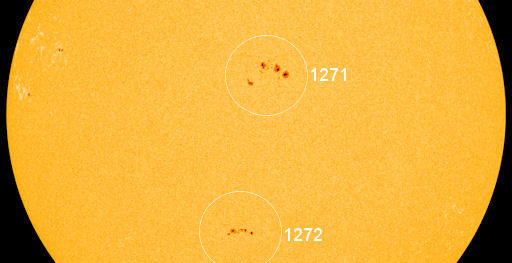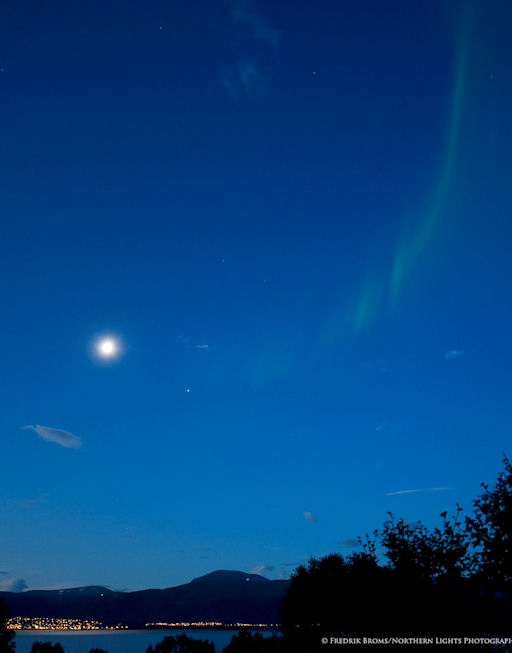Turn your cell phone into a field-tested satellite tracker. Works for Android and iPhone. | | |
HOW BIG WAS THAT METEOR? Last week, a picture of a Perseid meteor taken from the International Space Station became a minor internet sensation. Researchers from the NASA Meteoroid Environment Office have analyzed the image to figure out how big was that meteor? Watch the latest video from Science@NASA for the answer.
GROWING SUNSPOTS: After a weekend of quiet decay, sunspots 1271 and 1272 are growing again. Click on the image to view 24 hours of development:

So far the increase in size has not yet translated into a significant increase in flares. Solar activity remains low, although this could change if the sunspots' evolving magnetic fields become unstable and erupt. Stay tuned.
more images: from Michael Borman of Evansville, Indiana; from Isabell Lembke of the Netherlands; from Monty Leventhal OAM of Sydney Australia; from John Chumack of Dayton, Ohio; from Cai-Uso Wohler of Bispingen, Germany
RETURN OF THE ARCTIC AURORA: Around the Arctic Circle, the night sky has been missing for months. "The midnight sun is a sore trial for amateur astronomers in the high North," says Fredrik Broms of Kvaløya, Norway. "But now, after a long summer without stars (save one), darkness is falling again. Last night when I was watching the beautiful conjunction of Jupiter and the Moon, the first auroras of the season suddenly appeared!" He recorded the scene with a 1-second exposure on his Nikon digital camera:

"I am looking forward to a great season with lots of activity on the sun!" says Broms.
Even brighter Northern Lights could appear in the nights ahead. A solar wind stream is heading for Earth, due to arrive on August 23-24. High-latitude sky watchers should be alert for auroras. Aurora alerts: text, voice.
August 2011 Aurora Gallery
[previous Augusts: 2010, 2009, 2008, 2007, 2006, 2005, 2004, 2003, 2002]
2011 Noctilucent Cloud Gallery
[previous years: 2003, 2004, 2005, 2006, 2007, 2008, 2009]
Potentially Hazardous Asteroids (
PHAs) are space rocks larger than approximately 100m that can come closer to Earth than 0.05 AU. None of the known PHAs is on a collision course with our planet, although astronomers are finding
new ones all the time.
On August 22, 2011 there were 1241 potentially hazardous asteroids.
Notes: LD means "Lunar Distance." 1 LD = 384,401 km, the distance between Earth and the Moon. 1 LD also equals 0.00256 AU. MAG is the visual magnitude of the asteroid on the date of closest approach. | | The official U.S. government space weather bureau |
| | The first place to look for information about sundogs, pillars, rainbows and related phenomena. |
| | Researchers call it a "Hubble for the sun." SDO is the most advanced solar observatory ever. |
| | 3D views of the sun from NASA's Solar and Terrestrial Relations Observatory |
| | Realtime and archival images of the Sun from SOHO. |
| | from the NOAA Space Environment Center |
| | the underlying science of space weather |
| | for out-of-this-world printing and graphics |

